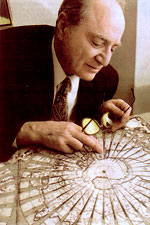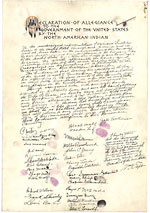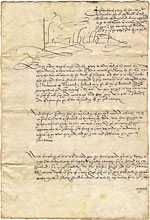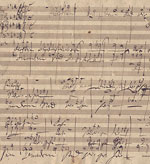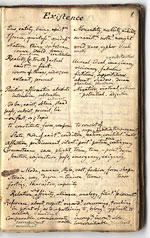A Million Manuscripts
In nine cities across the United States, the Karpeles Manuscript Library Museums showcase an extraordinary private collection of historic documents By Richard Goodman Richard Goodman’s new book, A New York Memoir, has just been published. He is also the author of French Dirt: The Story of a Garden in the South of France and The Soul of Creative Writing.
David Karpeles speaks like a man who has grown up to do what he dreamed of as a boy. Though it’s hard to think of a boy dreaming of opening ten museums in various unlikely cities across America in order to display his collection of rare manuscripts. But that’s just what he’s done. These museums—in Buffalo, New York; Charleston, South Carolina; Duluth, Minnesota; Jacksonville, Florida; Newburgh, New York; Santa Barbara, California; Tacoma, Washington; Shreveport, Louisiana; and Fort Wayne, Indiana—house, on a rotating basis, what they dub “the world’s largest private holding of important original manuscripts and documents.” Some of you may have been counting and noticed that those cities number nine, not ten. Indeed. But because of a quirky turn in this story—of which there are not a few—Buffalo has two Karpeles Manuscript Library Museums.
The story begins about thirty years ago when David and his wife, Marsha, took their children to a museum and found their reaction was highly unenthusiastic. “The only form of art they liked was music, and that had to be loud,” he recalled. That is, until a curator suggested they look at some manuscripts. When the children saw letters written by Thomas Jefferson and George Washington, history came alive for them, and they loved it. David and Marsha were so taken by their children’s enthusiasm, they decided to buy some manuscripts on their own—the first being a copy of the Emancipation Proclamation signed by Abraham Lincoln. Karpeles, a former mathematician, had done very well investing in California real estate.
Karpeles spoke with an open, warm voice. In recounting this history, the 74-year-old displayed a sense of wonder himself at how it all turned out. He continued with his unlikely story, “Then one day we realized only a few people could see these documents, and so we decided to find a way for others to be able to see them, too.” At the time, they were living in Montecito, near Santa Barbara, California. “So we bought a house across the street and opened our first museum. But because we were in a residential area, the town would only let us open every few months. So we bought a building in Santa Barbara where we could stay open 365 days a year. Very soon, we had a ton of people stopping by.”
He and his wife have clearly done this for love, not for money. All the museums are free to the public. All the expenses are paid out of pocket by Karpeles. This includes not only the cost of acquiring the buildings, but the renovation, the installation of climate control and alarm systems, the making of display cases, not to mention the employees—“around sixty to seventy,” Karpeles said, having to search his mind a bit for the precise number. In some cases, these expenses can be monumental. The first building they acquired in Buffalo had a hole in the roof which pigeons had used to do what pigeons do so well, and that took more than a few trucks to relieve the building of those deposits. It took two years to bring the building around. The ongoing costs can be staggering as well. “I got a heating bill once for one of the museums in Buffalo for February for $10,000,” Karpeles said. One can picture his head shaking at the other end of the telephone line.
All the while he was opening these museums, Karpeles continued collecting documents. He estimated he has “about a million now.” He’s quick to temper that number. “Well, it’s not as difficult as you might think. For example, I acquired all the documents of the Spanish Armada. These consisted of all the letters from the king to his commanders discussing everything you can imagine—from the stores, to strategy to finding enough ships to attack England. Often the king would be writing his commanders ten times a day! Well, that’s around forty thousand documents, and I acquired them all at once. If you do that ten or fifteen times, you can get to a million documents pretty easily.”









